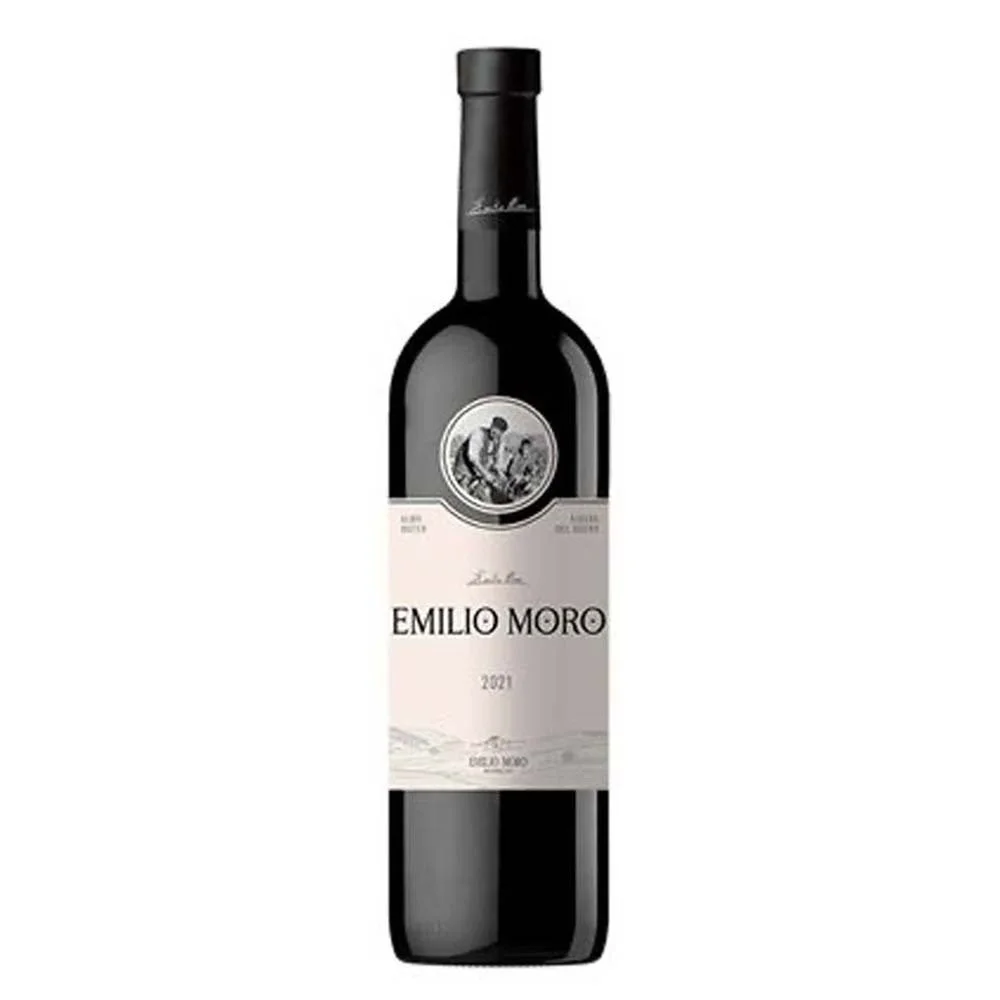TEMPRANILLO
Earthy, Elegant, And Spain’s Quiet Powerhouse
Tempranillo is the backbone of Spain’s most celebrated red wines—especially in Rioja and Ribera del Duero. Known for its balance, savory edge, and ability to age gracefully, Tempranillo offers flavors of red fruit, leather, and spice with a medium body and soft tannins. It's a natural pairing with food and a bridge between Old World tradition and modern refinement.
Key Characteristics
Tempranillo is medium-bodied and typically earthy, with red fruit, spice, and a gentle structure. It can be youthful and juicy or rich and oaked, depending on aging and style.
Style
Still, red
Body
Medium
Acidity
Medium
Primary Grapes
Tempranillo
also known as Tinta del País, Tinto Fino, Ull de Llebre, and more
Typical Flavors
Cherry, dried fig, leather, cedar, tobacco, clove, tomato leaf
Origin & History
Tempranillo has been grown in Spain for centuries, likely originating in the La Rioja region. Its name comes from temprano, meaning "early," because it ripens earlier than other local varieties. While best known in Rioja and Ribera del Duero, it’s also widely planted in Portugal (as Tinta Roriz or Aragonês) and used in Port blends.
How It’s Made
Tempranillo is typically aged in American or French oak barrels, often for extended periods. Spanish wines are labeled by aging style—Crianza, Reserva, and Gran Reserva—with longer aging bringing deeper flavors of leather, spice, and dried fruit. Younger styles are fresh and fruit-driven, while aged expressions are more complex and structured.
Notable Regions
Tempranillo shines brightest in Spain but is gaining ground elsewhere for its adaptability and food-friendly nature.
Spain
Rioja
Elegant, layered wines with red fruit, tobacco, and oak spice
Spain
Ribera del Duero
Richer, darker, and more powerful than Rioja, often with higher altitude freshness
Spain
Toro & Navarra
Fuller styles with bold fruit and structure
Portugal
Douro Valley
as Tinta Roriz
Used in Port blends and dry reds with earthy depth
United States
California & Texas
Ripe, round styles with moderate acidity
Food Pairings
Tempranillo’s savory edge and smooth tannins make it incredibly versatile at the table, especially with Mediterranean and roasted flavors.
Appetizers
Jamon Ibérico, olives, roasted red peppers
Meats
Roast lamb, grilled pork chops, chorizo
Cheeses
Manchego, aged cheddar, Mahón
Vegetarian
Stuffed peppers, lentils with smoked paprika, grilled eggplant
How to Serve It
Glassware
Standard red wine glass or Rioja-style stemware
Temperature
60–65°F (16–18°C)
Storage
Store on its side in a cool, dark place; top wines can age 10–30 years depending on classification
Fun Fact
Spain's official wine classifications—Crianza, Reserva, and Gran Reserva—are based on minimum barrel and bottle aging, giving drinkers a built-in guide to style and depth.
Recommended Producers
These houses exemplify the diversity and craftsmanship of Spain’s most iconic wine regions, from the bold reds of Ribera del Duero to the elegance of Rioja.
Bodegas Roda
A leading name in Rioja, known for elegant, age-worthy wines that balance innovation with classic finesse.
Pierre Gimonnet & Fils
A grower-producer celebrated for elegant, Chardonnay-focused Blanc de Blancs from the Côte des Blancs.
Bodegas Vega Sicilia – Alión
A prestigious Ribera label from Spain’s most revered producer, blending power, precision, and luxury.
Beronia
A widely respected Rioja house delivering approachable, well-balanced wines that express both tradition and drinkability.
Recommended Pours
Bodegas Emilio Moro - Ribera del Duero 2021 — A bold and expressive Tempranillo with dark fruit, spice, and a smooth, modern profile.
Bodegas Roda - Reserva Rioja 2019 — A refined Rioja Reserva offering layers of red berries, dried herbs, and elegant oak integration.
Bodegas Vega Sicilia Alion Ribera del Duero 2019 — A powerful and polished Ribera with depth, structure, and the hallmark finesse of Vega Sicilia.
Vareia Beronia Rioja 2020 — A youthful and approachable Rioja with juicy red fruit, subtle vanilla, and a touch of spice.





